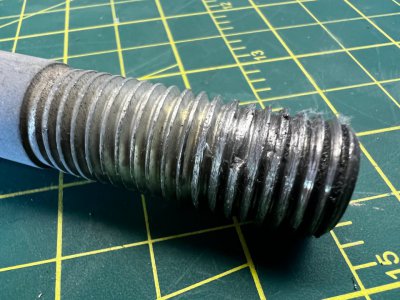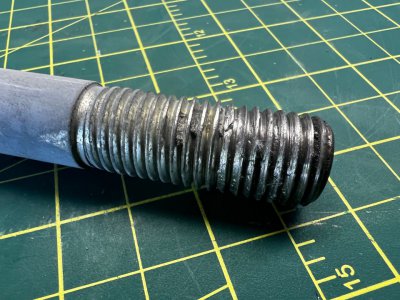The bolts on the RF clone do not rotate. Only the nuts are free to rotate. The head of the bolt is captured in a hexagonal pocket, preventing rotation.
It seems suspicously coincidental that all three nuts would lock up. I would suspect that some external influence was used. Possibly, the P.O. used LocTite on the threads for some unknown reason. Extreme rusting would also cause this symptom.
If you are able to turn the nut slightly, I would put a suitable lubricant on the nut threads and work the nut back and forth. With each attempt to unthread the nut, try to force it a little more. I have used this technique on impossibly frozen nuts with success. If there is no success with this technique, heating the nut could help, especially if LocTite was used.
If still no success, grinding the nuts away with an angle grinder and driving the bolts out with a punch will certainly work. If all else fails, cuting the bolts in half via the rear opening in the slot in the casting will allow you to pull the half with the nut out with a pair of Vise Grips and drive the remaining half out with a punch.


